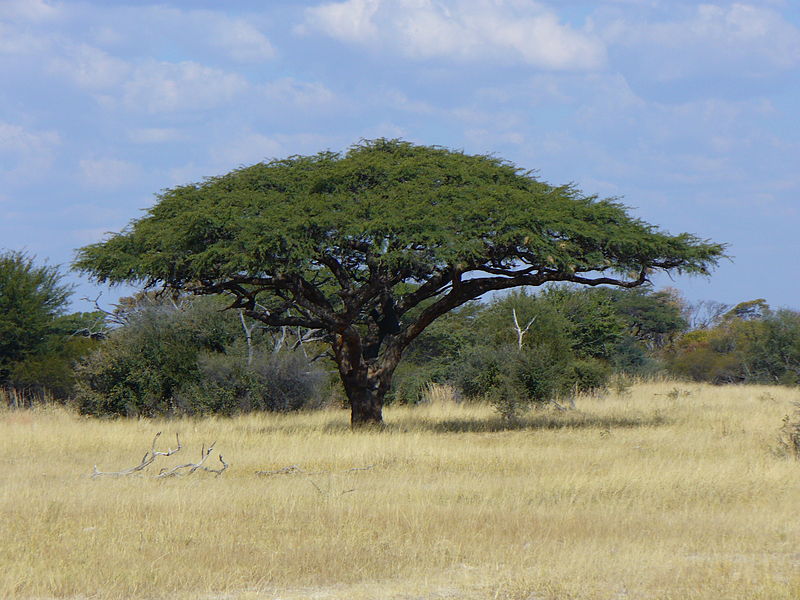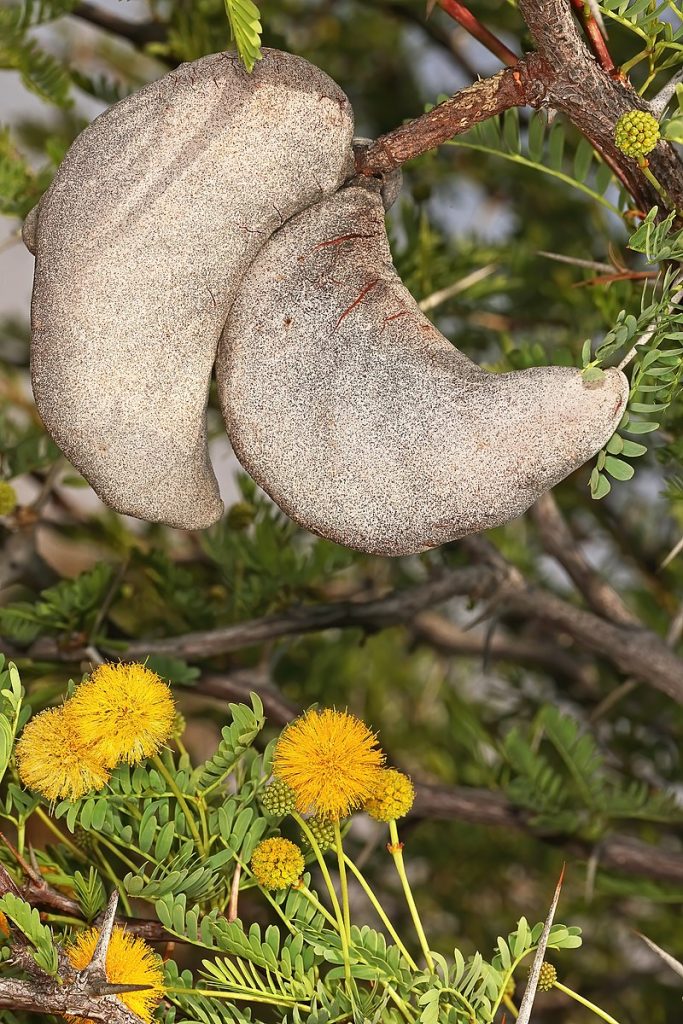
Also known as camel thorn, this evergreen tree or shrub is native to the deep, dry sandy soils of southern Africa. It is a member of the pea family, Fabaceae, that also includes lupines, mimosa, and black locust. The trees can grow up to 65′ tall from a very deep root system and have a shiny reddish brown stem when young and develops gray to blackish brown deeply furrowed bark with maturity. A pair of whitish or brown spines up to 3″ long are located at the base of the bipinnate leaves. Each leaf has 2-5 pairs of pinnae composed of 8-18 leaflets. The leaflets are hairless and have a prominent vein on the underside. From late winter to summer, densely packed balls of tiny, fragrant, yellow flowers appear in leaf axils. The most visible feature of the balls are the extruded golden stamens. The fruit is a dry, indehiscent, half-moon-shaped pod that is up to 5″ long and contains numerous lens-shaped seeds. Giraffe thorn plants are drought resistant, provide good shade, and are very picturesque in the landscape. The tree provides many useful products including edible gum, hard wood, and a coffee substitute from the seeds. The genus name, Vachellia, honors George H. Vachell (1789 – 1839), chaplain and plant collector in China. The specific epithet, erioloba, is of unknown origin. Photo Credit Wikipedia

Type: Evergreen tree
Outstanding Feature: Silhouette, shade
Form: Umbrella-shaped, rounded crown
Growth Rate: Slow
Bloom: Dense ball of fragrant yellow flowers in late winter into summer
Size: 6-65′ H
Light: Full sun
Soil: Lean, sandy, well-drained, acidic
Hardiness: Zones 9-11(?)
Care: Low maintenance
Pests and Diseases: None of significance
Propagation: Suckers, seed (difficult)
Outstanding Selections: None available
Photo Credit: SAplants Wikimedia